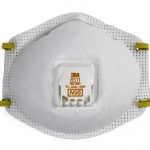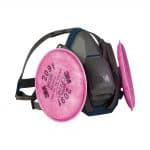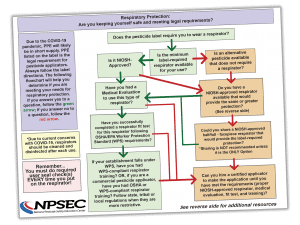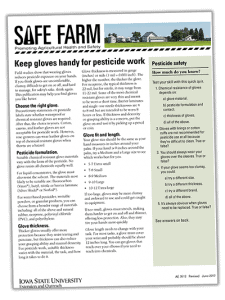
Pictured: N95 Respirator
MAY 2020
Producers and farmworkers face a dilemma during COVID-19. If a pesticide label lists a respirator, the applicator must wear a respirator. It’s legally required. So what does the farmer or farmworker do when the respirator isn’t available?
To answer this question, we contacted experts at the National Pesticide Safety Education Center (NPSEC) for guidance.
If a pesticide is being used and the label requires a respirator, there are certain steps and best practices that must be followed, as outlined in the decision-making guide.

Pictured: Particulate Filter P100 Respirator
These include:
- A medical evaluation
- A respirator fit test
- Respirator training as required by federal, tribal, or state regulations
- An inhale and exhale seal check every time you put on the respirator.
Respirator Decision-Making Guide

This guide will help pesticide applicators understand respirator options and provide guidance to answer questions which will address critical needs.
Options to consider if required respirator is not available:
- Consider alternatives to pesticides. Are there ways you can eliminate the need for this pesticide? Can you change the way it’s applied? These suggestions come from the National Institute for Occupational Safety and Health (NIOSH) Hierarchy of Controls. The Hierarchy of Controls focuses on preventing hazards altogether, with the understanding that this will improve safety and health for more people and over a longer amount of time. Personal protective equipment (PPE) should be used as a last resort.
- Using a pesticide that does not need a respirator
- Using a different respirator that provides the same or better protection
- Hiring a certified applicator
- At the very last resort, the NPSEC suggests sharing a respirator with someone else. This increases the risk of getting and spreading COVID-19. To reduce this risk, respirators should be thoroughly cleaned and carefully disinfected after each use.
 Keep Gloves Handy for Pesticide Work
Keep Gloves Handy for Pesticide Work
Field studies show that wearing gloves reduces pesticide exposure on your hands.
This publication may help you find gloves that fit and will be comfortable while working.
The NPSEC decision-making guide, a video illustrating these guidelines, along with additional respirator information, can be found at http://npsec.us/respirators
“NPSEC felt developing a decision-making guide would help pesticide applicators understand their options. This decision-making guide will provide Pesticide Safety Education Programs (PSEPs), State Lead Agencies (SLAs) and others with an educational tool to provide guidance and answer questions which will address this critical need.” – Kerry Richards, NPSEC’s Education Program Developer
